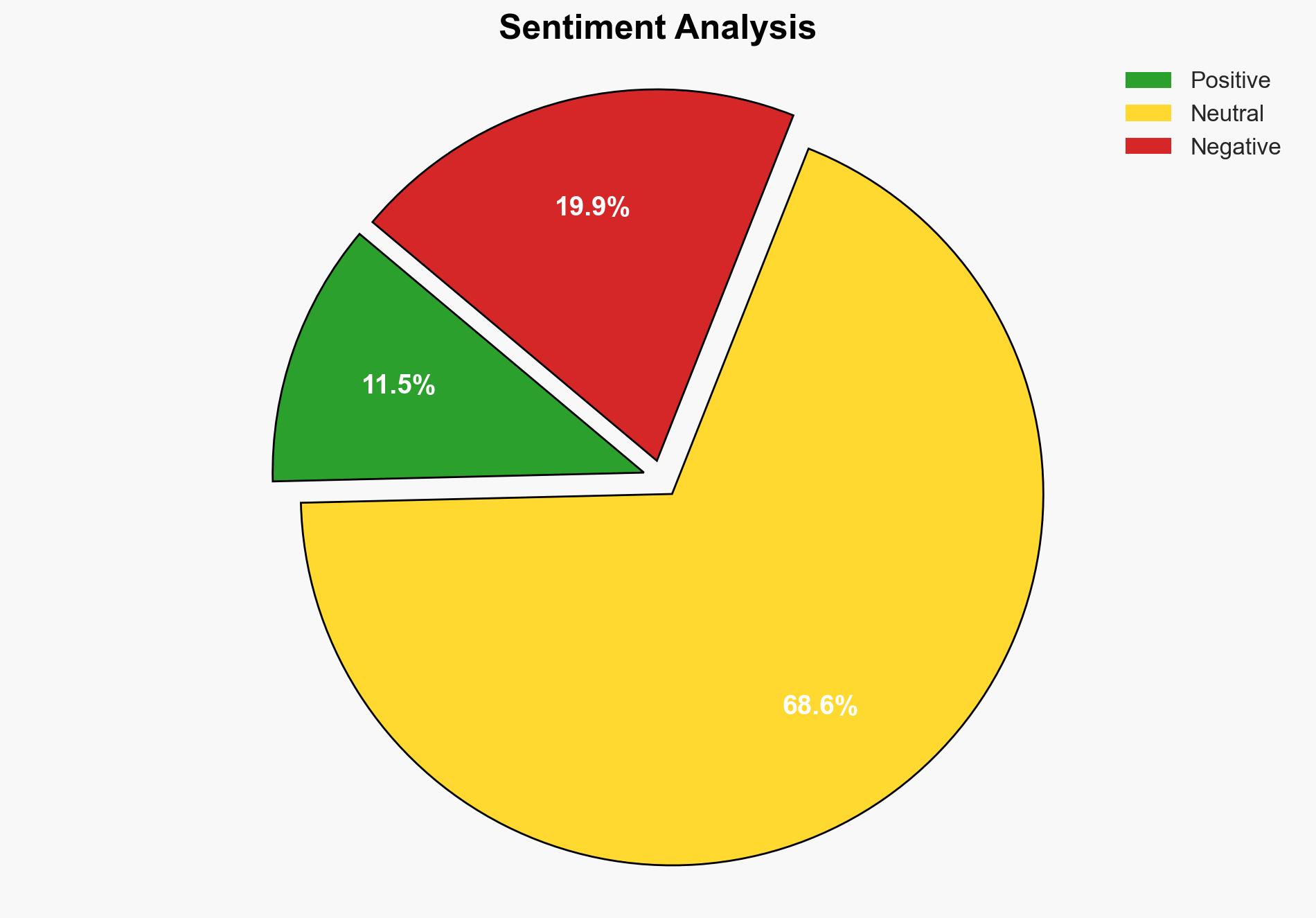Hack 6M Records for Sale Exfiltrated from Oracle Cloud Affecting 140k Tenants – Cloudsek.com
Published on: 2025-03-23
Intelligence Report: Hack 6M Records for Sale Exfiltrated from Oracle Cloud Affecting 140k Tenants – Cloudsek.com
1. BLUF (Bottom Line Up Front)
A threat actor has exfiltrated 6 million records from Oracle Cloud, affecting approximately 140,000 tenants. The data includes sensitive authentication information such as encrypted SSO passwords and LDAP credentials. The attacker is demanding payment for decryption assistance and data removal. This incident suggests a potential undisclosed vulnerability in Oracle Cloud’s login systems, posing significant risks to affected entities.
2. Detailed Analysis
The following structured analytic techniques have been applied for this analysis:
General Analysis
The threat actor has been active since January, leveraging a possible vulnerability in Oracle Cloud’s login region. The compromised data includes sensitive authentication files such as JKS files, encrypted SSO passwords, and key files. The attacker offers incentives for decryption assistance, indicating a sophisticated approach to extortion. The incident aligns with previous activities observed on breach forums, suggesting a high level of sophistication and intent to exploit vulnerabilities in Oracle’s technology stack.
3. Implications and Strategic Risks
The breach poses significant risks, including unauthorized access to corporate networks, potential corporate espionage, and increased financial and reputational damage due to extortion demands. The exploitation of a zero-day vulnerability in Oracle Fusion Middleware could lead to further unauthorized access and data breaches. This incident highlights the critical need for improved cybersecurity measures and vulnerability management within cloud environments.
4. Recommendations and Outlook
Recommendations:
- Conduct a thorough security audit of Oracle Cloud environments to identify and patch vulnerabilities.
- Implement enhanced monitoring and incident response protocols to detect and mitigate unauthorized access attempts.
- Encourage affected entities to engage with cybersecurity experts to assess potential exposure and implement remediation strategies.
- Advocate for regulatory frameworks that mandate stringent cybersecurity standards for cloud service providers.
Outlook:
Best-case scenario: Prompt identification and remediation of vulnerabilities, coupled with enhanced security measures, mitigate further risks and prevent additional breaches.
Worst-case scenario: Failure to address vulnerabilities leads to widespread exploitation, resulting in significant data breaches and financial losses for affected entities.
Most likely outcome: Incremental improvements in security posture reduce immediate risks, but ongoing vigilance and adaptation to emerging threats remain necessary.
5. Key Individuals and Entities
The report mentions significant individuals and organizations involved in the incident. However, specific roles or affiliations are not disclosed. Key entities include the threat actor responsible for the breach and Oracle Cloud as the affected service provider.




